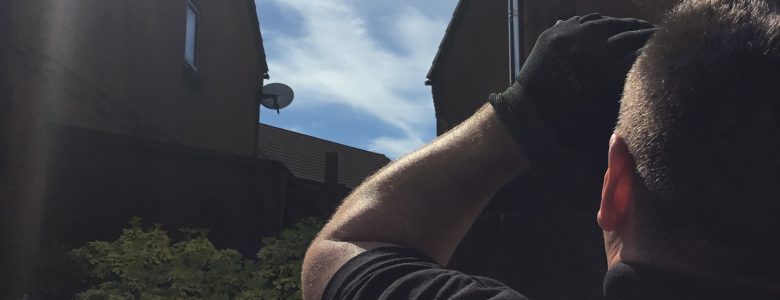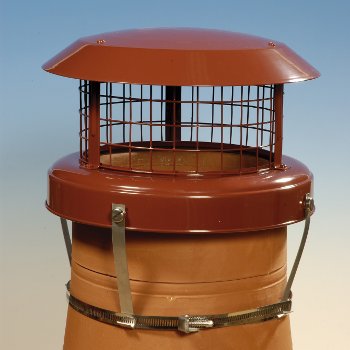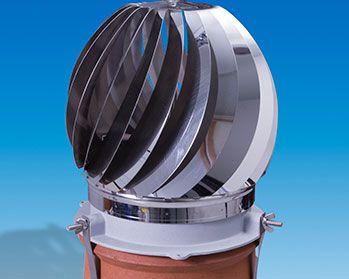There are many chimney cowlings on the market today, some are designed well and have a positive function and some are restrictive and should not be used for live appliances.
Do I require a chimney cowling and what are the pros and cons?
Cons:
In many instances you will not require a cowling. Fitting a cowling can case a restriction of flue gases and slows down the fumes escape, this in return can lead to dirtier chimneys and more frequent sweeping. Cowling are generally made of metal and are very cold in winter, when hot flue gasses containing creosote hit this cold surface they can condense causing a rapid tarring of the meshing.
Pros:
There are some instances where a chimney cowling is the only sensible option, Some examples may be; Bird infestation, down draughts and heavy rain ingress. If these problems are left untreated hey can have devastating consequences with both personal risk and unnecessary expense.
It is unlikely that fitting a cowling will increase the draught of a chimney indeed the added restriction will most likely reduce the updraught further. Fitting a rotor cowling can increase the updraught in some instances when the wind can be utilised to drive the fan. The best solution`s for inadequate draught are relining with an appropriate sized liner for the appliance, increasing the chimney length or installing a chimney fan.
TIP! A poor updraught may be a symptom of excessive leakage within the flue which could have fatal consequences. If you can imagine drinking through a straw that has a split in you quickly notice that it is impossible to hold the Vacuum, this is similar within a flue. leakage can be tested for using a special machine such as the wohler DP23, smoke can also be used but the results are nearly always inconclusive. For more info on chimney leakage testing look here http://www.chimneyservice.co.uk/pressure.php
Rotor vents can be useful in helping to defeat down-draughts caused by the wind. They rarely help in Down draughts that are caused by positive pressure (over hanging trees or buildings usually cause this) in these instances it is typically necessary to extent the flue out of the high pressure zone by installing a long pot or extending the stack.
Over the years, old wife’s tales have led to builders and DIYers fitting inappropriate or unsafe terminals. It is vitally important that if you have one of these incorrect tops fitted that you do not use your appliance until it is removed or replaced. I have added a link below below for terminals that are for disused/defunct chimneys. Please do not assume that because the terminal you have is not pictured, then it is safe. I have only given samples of the most common unsafe terminals.. If you are unsure then speak to a professional.
I hear on a daily basis that customers like the smell of a particular type of wood smoke?. When I tell the person that wood smoke contains very high levels of carbon monoxide they are often surprised. In the modern world we live in, it is never acceptable to breath any amount of smoke. Some fires or stoves may smoke a little for the first five minutes or so while they are cold however after this time there must be NO smoke or fumes seeping or leaking back into any living space. A carbon monoxide alarm should be installed within any room that has any appliance that burns carbon based fuels. This may seem alarmist but it simply takes away the guess work and makes the user experience of a having a real fire much more enjoyable.
So to answer the question do you need a cowling?. Maybe, maybe not, but you may have an undiagnosed problem that needs addressing by a professional.









Leave a Reply